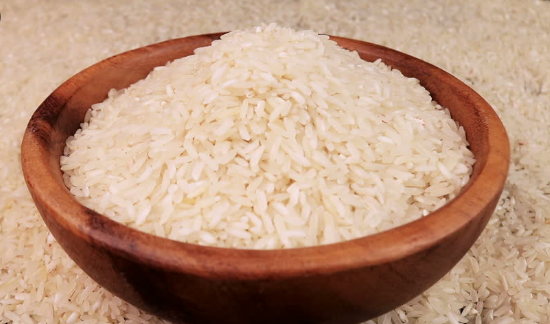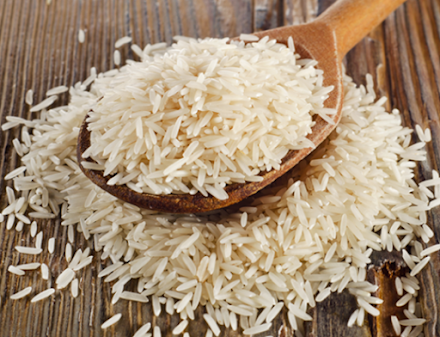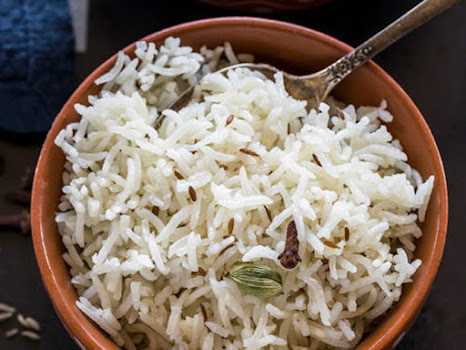A Solid Decision Of Rice
Of course, rice is effectively arranged into two kinds: white rice and earthy colored rice. Indeed, there are more than 40,000 kinds of rice, a significant number of which can deliver both white and earthy colored rice, because the contrast between white and earthy colored rice is simply because of handling and not assortments. Practically these kinds of rice can be separated into three principal classes: long grain rice, medium-grain rice, and short-grain rice. Long grain rice is around multiple times longer than long grain rice. It is delicate when cooked, however, stays discrete. Medium grain rice is about twice the length it is wide. It is tacky rice whose grains stay together in the wake of cooking. Short grain rice is short, fat, and will in general stay together in clusters and pieces in the wake of cooking.
Developed rice, that is, non-wild rice, started in China around 10,000 years prior from a solitary harvest that advanced into two distinct species. They are called Asian rice and African rice, and each developed into many various assortments that we currently use under the overall term "rice" to depict them.
Tacky rice is Asian-type rice that can be produced using any short-grain white rice, however is cooked so that it loses its shape and turns out to be tacky or tacky. However, don't be tricked by the word gluten; the rice is normally sans gluten, making it an extraordinary choice for individuals with celiac illness or other gluten bigotries. Tacky rice gets tacky when cooked because of its high amylopectin content.
Dark rice is dark as a result of anthocyanin, a cancer prevention agent ordinarily found in dull hued plants, for example, eggplant, raspberries, dark soybeans, and blueberries. Anthony shows up in various tones relying upon the pH of the food. Dark rice is in some cases called "illegal rice" or "magnificent rice" because truly just the richest individuals could manage the cost of the advantage of this dull rice.
Pink rice is filled fundamentally in Madagascar and has a sweet flavor suggestive of pumpkin pie zest. It has a sweet flavor that is more inconspicuous than everything else, except it makes the ideal rice for rice pudding. It's harder to discover because it's just filled in a little piece of the world, however, if you can get your hands on it, it's justified, despite all the trouble.
Red rice is high in magnesium and potassium and has a nutty, natural flavor. When cooked, it loses a portion of its rich red tone and shows up more pink than red.
Wild rice? This is a kind of water grass, not actually rice, although it would seem that it. Initially, wild rice was developed and eaten by Native Americans. It fills generally in the wild in the Great Lakes locale. Today, it is generally filled in fake rice paddies, albeit natural wild rice can be found in forte markets. It is frequently sold blended in with long grain rice for its tasteful allure.
Which kind of rice is the best?
Long grain rice is more grounded than short-grain rice since short grain rice has a higher glycemic file than long grain rice. The glycemic file, or GI, is a framework that gauges the impact of an eating routine on glucose levels from 0 to 100. Nourishments with a low glycemic record, 55 or lower, are processed all the more gradually and consumed by the body all the more gradually, which implies the starches give energy gradually and are better for longer-enduring energy. This is preferable for your body over nourishments with a high glycemic file, 56 or higher. Nourishments with a high glycemic list are retained quicker and cause glucose levels to rise. Rice assortments have a low to high glycemic list, contingent upon the sort, level of handling, and technique for cooking the rice. Different nourishments eaten alongside rice additionally influence its glycemic record score. When taking a gander at the nourishments you eat, remember that the measure of starches burned-through is similarly as significant, if not more significant, than the Glycemic Index itself.
The most regularly prepared assortments of rice are :
Medium grain earthy colored rice, which has a GI estimation of 50.
Long grain Basmati Rice Nutrition, which has a GI estimation of 57
Medium grain Arborio rice (some of the time called rice for risotto), which has a GI estimation of 69
Short grain white rice with a GI estimation of 72
Tacky or sweet rice is short-grain white rice with a GI estimation of 87
Jasmine rice (likewise called enhanced rice) has the most elevated GI estimation of 89.
Note, notwithstanding, that how the rice is readied affects this worth. The GI worth changes relying upon how the rice is cooked. For instance, medium-grain earthy colored rice has a GI of 50 when steamed, a GI of 59 when microwaved, and a GI of 72 when cooked, contingent upon the sort of rice you cook. Since there are various kinds of rice and each has distinctive dietary limitations, it is ideal to investigate which sort of rice has the fundamental GI worth and which cooking strategy is appropriate for your particular requirements.
Earthy colored rice is viewed as the best sort of rice, yet a few people think earthy colored rice is a more regrettable decision since it will in general contain more arsenic than white rice. Earthy-colored rice contains more supplements, however white rice will in general contain less arsenic. Earthy colored rice is plentiful in nutrients and minerals, the majority of which are lost when earthy colored rice is transformed into white rice. Notwithstanding, numerous brands of white rice have been braced with a portion of the nutrients and minerals that are lost during the transformation cycle.
Basmati rice, likewise called popcorn rice as a result of its smell, is an assortment of long grain rice that will in general have the most medical advantages. Of all rice assortments, basmati rice will in general have the most advantages and the least measure of hurtful arsenic.
Is arsenic present in rice?
The short answer is yes. Arsenic is a normally happening component found in the world's covering, yet it comes in two distinct structures. Natural arsenic and inorganic arsenic are various mixes, yet both ought to be restricted in your eating regimen. Inorganic arsenic, be that as it may, is the genuine issue since it has been connected to diseases of the skin, liver, and bladder. Natural arsenic is found normally in the world's outside layer and is quite possibly the most bountiful components on earth. It's as yet bad for you, but rather it's the lesser of two shades of malice.
A few sorts of rice contain more arsenic than others. It simply relies upon where the rice was developed. Basmati rice is normally the one with the least arsenic, however Indian basmati rice is the best up-and-comer if you are worried about the arsenic substance of your rice. Earthy colored rice will in general contain more arsenic than white rice because the arsenic is put away in the external husk, or what makes earthy colored rice earthy colored. Rice assortments filled in Texas have been appeared to have the most elevated levels of arsenic because the dirt is intensely dirtied with arsenic-containing pesticides.
How does arsenic get into rice?
Arsenic is available in rice and all through the evolved way of life from three sources. From the world's hull, as referenced prior, from contamination from plants that produce and deliver a great deal of arsenic into the air, and from certain arsenic-containing pesticides that, up to this point, were among the most famous in the United States. Tragically, these pesticides have durable impacts on the climate since they penetrate the dirt and water supply. Since rice is filled in water and requires considerably more water than a harvest like wheat, it is especially defenseless against engrossing hurtful synthetic compounds.




Comments
Post a Comment